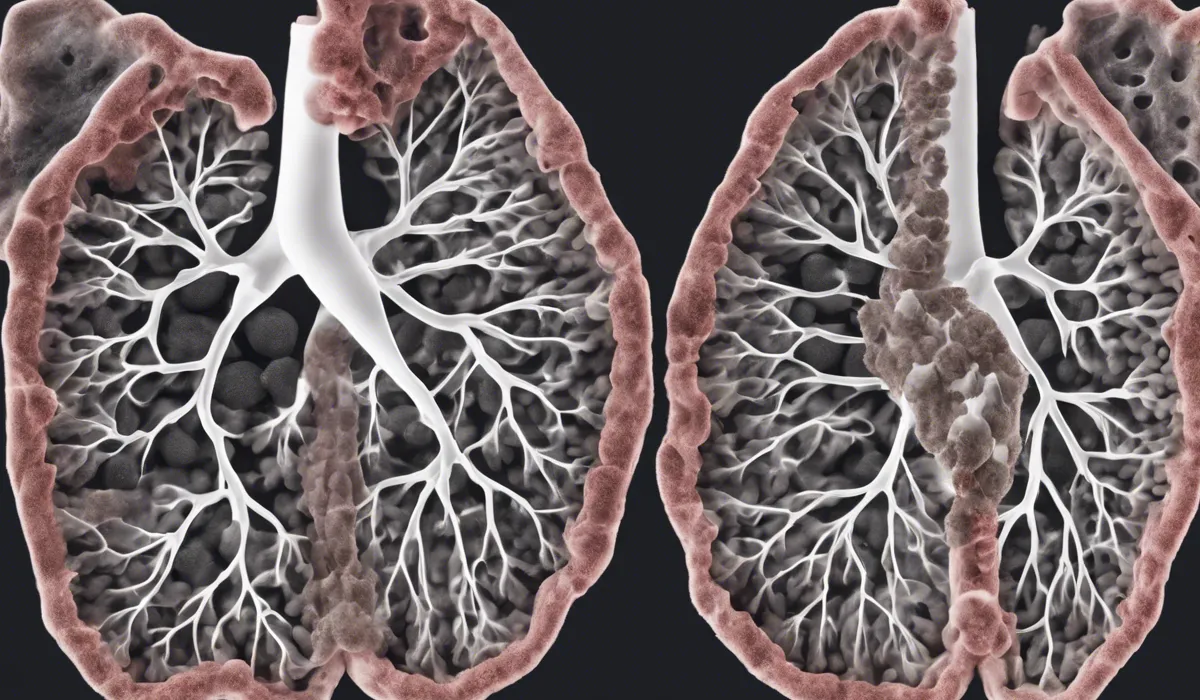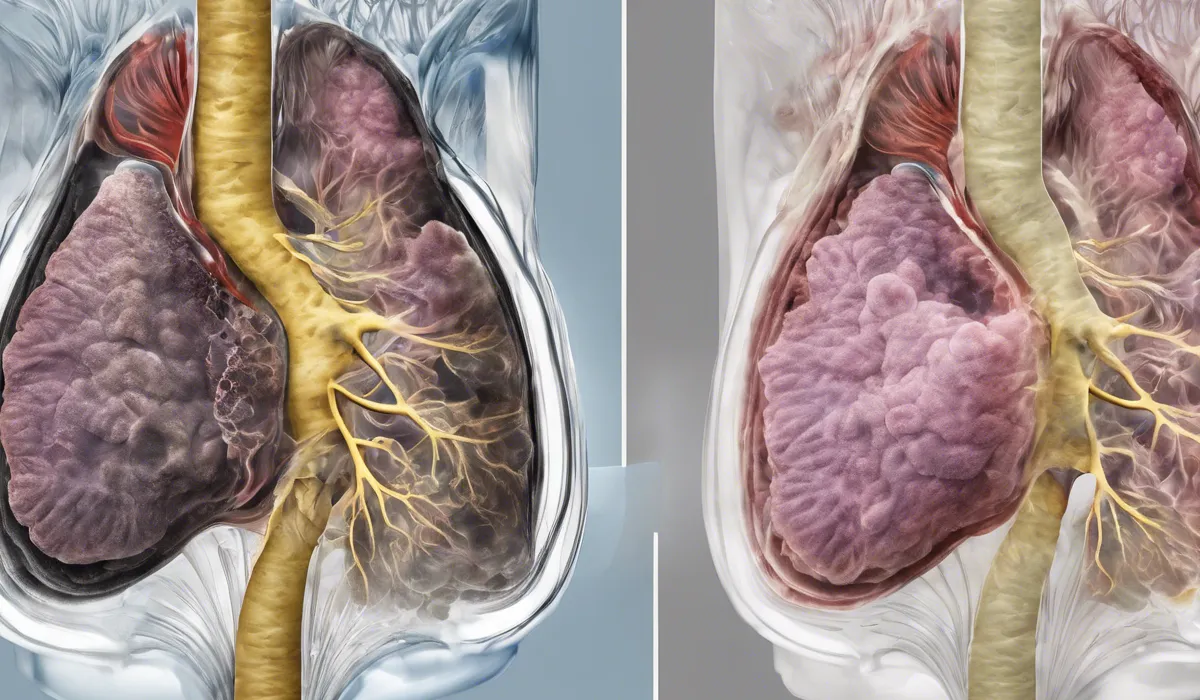Yes, mold can grow in the lungs, a condition known as pulmonary mycosis or mold infection. This typically occurs in people with weakened immune systems or chronic lung diseases. It requires medical diagnosis and treatment.
Understanding the Possibility of Mold Growth in Lungs

What Is Mold and What Are Its Common Types
Mold is a type of fungus that can grow almost anywhere there is moisture and organic material.
It comes in many forms and colors, including black, white, green, or purple. Some common types of mold include Aspergillus, Cladosporium, and Penicillium.
These names may sound complex, but they are simply different species that can affect our environments and, sometimes, our health.
Conditions Required for Mold to Grow
Mold loves damp, warm, and humid places. It needs these conditions to grow and spread. Places like bathrooms, basements, and kitchens are often mold’s favorite spots in homes.
But for mold to grow in our lungs, it usually requires an imbalance in our body’s natural defenses, which we will talk about next.
Body’s Defense Mechanisms Against Inhaled Particles
Our lungs are like a fortress. They have special defenses to protect us from invaders like mold.
Tiny hairs called cilia move together to push out unwanted particles. We also have mucus that traps these particles.
When we cough or sneeze, we are sending these intruders packing. These defenses are usually great at keeping mold out. But sometimes, they need a little extra help.
When Mold Colonizes in the Lungs?
There are times when mold can take hold and grow in the lungs. This can happen if someone breathes in a lot of mold spores from the environment.
People who have health conditions that make it hard to breathe or who have a weakened immune system are more at risk. The mold can settle in the lungs and start to grow, causing health problems.
High-Risk Groups for Mold Infections
People who have a harder time fighting off infections are at higher risk for mold growth in their lungs.
This includes individuals with HIV/AIDS, cancer patients undergoing chemotherapy, organ transplant recipients, and others with conditions that suppress the immune system. These folks need to be extra careful about the air they breathe.
Health Implications of Mold in the Lungs

Overview of Pulmonary Fungal Infections
A pulmonary fungal infection happens when mold or fungi make a home in someone’s lungs.
This can lead to a variety of health issues, ranging from mild to very serious. It’s important to know that these infections can be treated, but catching them early is key.
Recognizing Symptoms of Mold Infection
When mold grows in the lungs, it can cause symptoms like coughing, wheezing, and feeling short of breath.
Some people might have chest pains or cough up blood. If someone is having these symptoms, it’s important to see a doctor, especially if they are at higher risk for lung infections.
Diseases Caused by Mold in the Lungs
There are a few diseases that can happen when mold grows in the lungs. Aspergillosis is one, and it’s caused by the Aspergillus mold.
Another is hypersensitivity pneumonitis, which is an allergic reaction to breathing in mold spores. Both of these can be serious but are manageable with the right care.
Long-Term Effects of Untreated Mold Infections
If a mold infection in the lungs isn’t treated, it can lead to long-lasting problems. The infection can spread, and it can be harder to breathe over time.
It’s really important to treat these infections early to avoid more serious health issues down the road.
Diagnosing and Detecting Mold in the Lungs
Finding mold in the lungs can be tricky. Doctors might use chest X-rays or CT scans to look inside the lungs.
They might also test mucus or do a biopsy to check for mold. These tests help doctors figure out the best way to treat the infection.
Prevention and Treatment Strategies

Minimizing Mold Exposure
Keeping away from mold is a good first step to staying healthy. This means fixing leaks, using dehumidifiers, and cleaning up moldy areas safely.
Avoiding places with a lot of mold, like damp basements or outdoor piles of leaves, can also help.
Air Quality and Ventilation
Good air quality is super important for lung health. Making sure homes and buildings are well-ventilated helps keep the air fresh and reduces mold growth. Using air purifiers and keeping vents clean can also make a big difference.
Medical Interventions for Mold Infections
When someone has a mold infection in their lungs, doctors might prescribe antifungal medications. These medicines help kill the mold and stop it from growing. Sometimes, in severe cases, surgery might be needed to remove infected areas of the lung.
Supporting the Immune System
Keeping the immune system strong is a great way to fight off infections. Eating healthy foods, getting enough sleep, and staying active can all help the body stay ready to defend against mold and other germs.
Monitoring Lung Health for At-Risk Individuals
People who are at higher risk for lung infections should keep a close eye on their lung health.
This might mean regular check-ups with a doctor and being quick to report any new or unusual symptoms. Staying on top of lung health is crucial for preventing and treating mold infections.
FAQs About Mold Growth in Lungs
Can mold actually grow in your lungs?
Yes, mold can grow in the lungs, a condition known as pulmonary mycosis.
Who is at risk for pulmonary mycosis?
Individuals with weakened immune systems or chronic lung diseases are at a higher risk for pulmonary mycosis.
What are the symptoms of mold growth in the lungs?
Symptoms can include coughing, difficulty breathing, and chest pain, but a medical diagnosis is necessary to confirm mold infection.
How is pulmonary mycosis diagnosed?
Pulmonary mycosis is diagnosed through medical examinations, which may include imaging tests and laboratory analysis of respiratory samples.
What is the treatment for mold infection in the lungs?
Treatment typically involves antifungal medications and, in some cases, may require surgical intervention.
Final Thoughts
Mold can indeed take root in the lungs, a serious condition referred to as pulmonary mycosis, prevalent among individuals with compromised immune systems or those suffering from chronic lung ailments.
Such infections necessitate prompt clinical diagnosis and appropriate therapeutic interventions to manage and treat the condition effectively.
